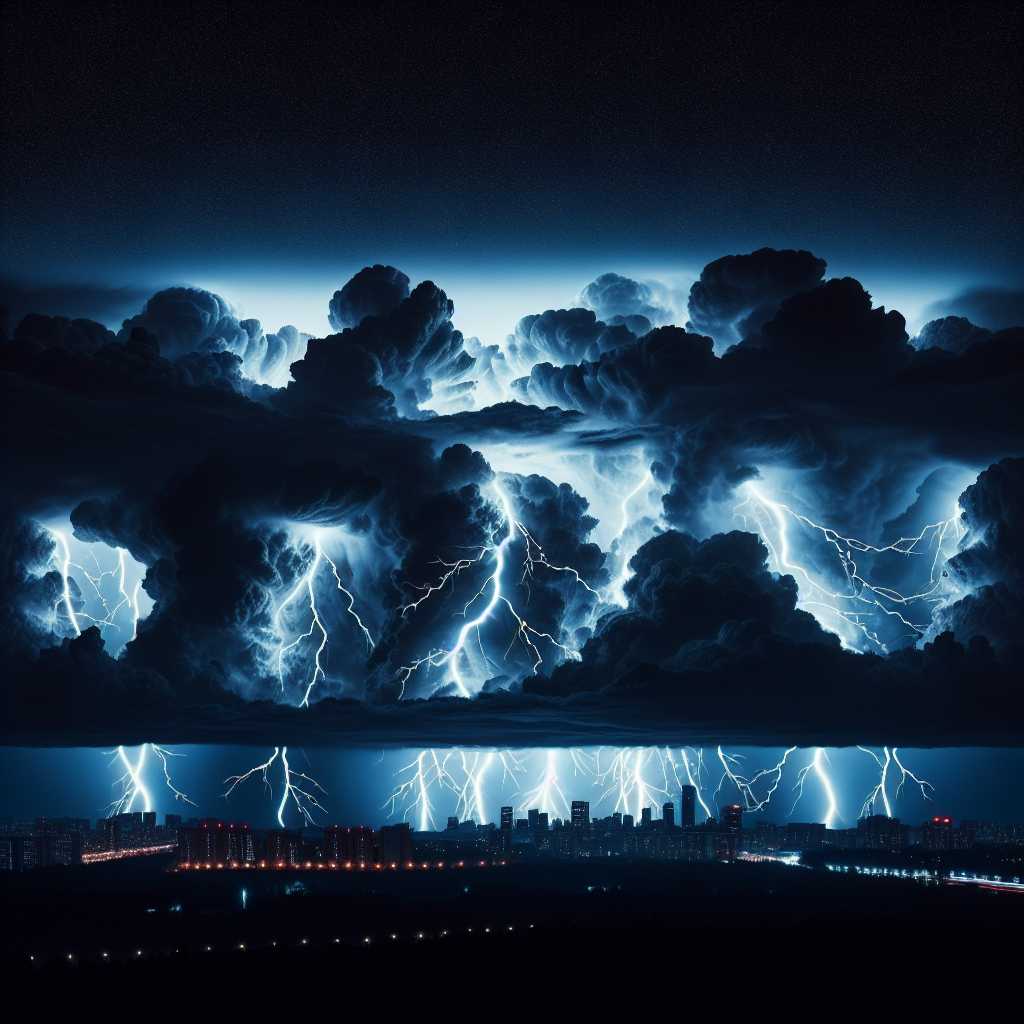The Formation and Importance of Thunderbolts in Meteorology and Folklore
Thunderbolts are a majestic and intriguing natural phenomenon that has been the subject of awe, mythology, and scientific study throughout human history. Broadly speaking, a thunderbolt is typically referred to as a flash of lightning accompanied by thunder during a storm. This article explores the scientific understanding of thunderbolts, their impact on human culture, technology inspired by them, challenges in prediction, and various facts and statistics associated with them.
Understanding Thunderbolts from a Scientific Perspective
Formation of Thunderbolts
Thunderbolts result from the natural atmospheric process known as lightning. A lightning strike can be defined as a sudden electrostatic discharge that occurs during a thunderstorm. The formation of a lightning strike begins with the separation of positive and negative charges within a storm cloud. Updrafts in storm clouds typically carry water droplets upwards, while downdrafts contain heavier ice particles that fall. Through the process known as charge separation, collisions between the water droplets and ice particles create an environment where the ice particles gain a positive charge, and the water droplets and remaining ice particles carry a negative charge.
As the negatively charged particles gather at the bottom of the storm cloud and positively charged particles accumulate at the top—and sometimes along the ground under the cloud—the electric potential between these charged areas increases. When the electrical potential difference is high enough to overwhelm the insulating properties of air, a rapid discharge of electricity occurs—this discharge is lightning. The subsequent expansion and contraction of air around this discharge create the sound waves known as thunder, hence a “thunderbolt.”
Why Thunderbolts are Fascinating: Energy and Heat
The sheer power of thunderbolts makes them fascinating from an energy standpoint. A single lightning strike can carry up to one billion volts of electricity and can heat the surrounding air to temperatures five times hotter than the surface of the sun—that means air temperatures can reach approximately 30,000 Kelvin or 53,540 degrees Fahrenheit.
Plasma Formation and Light Emission
Furthermore, when lightning strikes, it creates a plasma—a state of matter similar to gas but with free electrons and ions, which conduct electricity. The intense heat from the lightning causes electrons in atoms to move to higher energy levels. When these electrons drop back to their original levels, they release energy in the form of light.
The Cultural Impact of Thunderbolts
Mythology and Religion
Throughout history, humans have been both awed and terrified by thunderbolts. They play significant roles in mythology and religion. In many cultures, gods associated with thunderbolts were considered powerful and were often seen as weather deities or sky gods—such as Zeus in Greek mythology, Thor in Norse mythology, Indra in Hinduism, or Jupiter in Roman mythology.
Omens and Superstitions
Various superstitions around thunderbolts have also developed; for instance, some believed that finding stones or objects where thunderbolts had struck would bring protection or luck.
Technology Inspired by Thunderbolts
Lightning Rods: Safeguarding Infrastructure
The understanding of electricity gained from thunderbolts has led to tangible technological progresses such as the invention of lightning rods by Benjamin Franklin in the 18th century. These devices are metallic poles installed on structures to safely divert the massive electrical currents away from buildings to prevent fire or damage.
Electric Generation: Harnessing Lightning’s Power
Researchers have also examined if it’s possible to harness the electricity from thunderbolts for power generation. However, despite its vast power, lightning is too sporadic and unpredictable for practical electricity generation—thus far at least.
Forecasting Challenges Associated with Thunderbolt Prediction
Meteorological Challenges
Predicting precisely when and where thunderbolts will strike remains an ongoing challenge in meteorology. Weather conditions that can generate thunderstorms can be identified: high humidity levels, strong updrafts, and unstable atmospheric conditions are key indicators. Yet, predicting individual lightning strikes is not currently feasible due to their random nature.
Technological Innovations in Detection Systems
Notwithstanding these challenges, advanced technologies such as Doppler radar systems have significantly improved storm tracking and thunderbolt detection which benefits both forecasting efforts and public safety initiatives.
Notes
At the end, an article discussing “Thunderbolts” dives into their formation based on meteorological principles, sketches out significant impacts on society through cultural beliefs and technological inspirations derived from them, addresses complications faced in predicting these phenomena, sheds light on some remarkable statistical data – aiming for an informative and comprehensive understanding of what constitutes a “Thunderbolt” at confluence with science and lore.
Image Description: A photograph depicting a dramatic skyline where dark storm clouds are split by jagged white streaks—indicative of intense thunderbolt activity—against the contrasting blackened backdrop hinting at nightfall just interrupted by these manifestations of atmospheric electricity.

